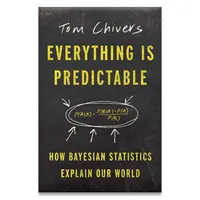High school students who came up with 'impossible' proof of Pythagorean theorem discover 9 more solutions to the problem
In a new peer-reviewed study, Ne'Kiya Jackson and Calcea Johnson outlined 10 ways to solve the Pythagorean theorem using trigonometry, including a proof they discovered in high school.

Two students who discovered a seemingly impossible proof to the Pythagorean theorem in 2022 have wowed the math community again with nine completely new solutions to the problem.
While still in high school, Ne'Kiya Jackson and Calcea Johnson from Louisiana used trigonometry to prove the 2,000-year-old Pythagorean theorem, which states that the sum of the squares of a right triangle's two shorter sides are equal to the square of the triangle's longest side (the hypotenuse). Mathematicians had long thought that using trigonometry to prove the theorem was unworkable, given that the fundamental formulas for trigonometry are based on the assumption that the theorem is true.
Jackson and Johnson came up with their "impossible" proof in answer to a bonus question in a school math contest. They presented their work at an American Mathematical Society meeting in 2023, but the proof hadn't been thoroughly scrutinized at that point. Now, a new paper published Monday (Oct. 28) in the journal American Mathematical Monthly shows their solution held up to peer review. Not only that, but the two students also outlined nine more proofs to the Pythagorean theorem using trigonometry.
"To have a paper published at such a young age — it's really mind-blowing," Johnson, who is now studying environmental engineering at Louisiana State University, said in a statement emailed to Live Science. "I am very proud that we are both able to be such a positive influence in showing that young women and women of color can do these things."
By proving Pythagoras' theorem using trigonometry, but without using the theorem itself, the two young women overcame a failure of logic known as circular reasoning. Trigonometry is a branch of mathematics that lays out how the sides, lengths and angles in a triangle are related, and as such, the discipline often includes expressions of the Pythagorean theorem. But Jackson and Johnson managed to prove the theorem using a result of trigonometry called the Law of Sines, dodging circular reasoning.
In the new study, and on top of their initial proof, the young mathematicians described four new ways to prove Pythagoras' theorem using trigonometry, as well as a novel method that revealed five more proofs, totaling 10 proofs.
Get the world’s most fascinating discoveries delivered straight to your inbox.
Jackson and Johnson are only the third and fourth people known to have proven the Pythagorean theorem using trigonometry and without resorting to circular reasoning. The two other people were professional mathematicians, according to the statement.
"I didn't think it would go this far," Jackson, who currently studies pharmacology at the Xavier University of Louisiana, said in the statement. "I was pretty surprised to be published."
In the paper, Jackson and Johnson say there are two ways to present trigonometry and its functions sine and cosine, but these versions are often conflated into one. Sine and cosine are ratios that are defined in the context of a triangle's right angle, and they can be presented according to either the trigonometric method or a method that uses polynomials of complex numbers, according to the paper.
The conflation means that "trying to make sense of trigonometry can be like trying to make sense of a picture where two different images have been printed on top of each other," Jackson and Johnson wrote.
By teasing the two methods apart, researchers can discover "a large collection of new proofs of the Pythagorean theorem," the young mathematicians added.
If you liked reading this story, here are some mathematics books you might also enjoy:
"Vector: A Surprising Story of Space, Time, and Mathematical Transformation" by Robyn Arianrhod
Read an excerpt from "Vector," which shows how we moved from words and pictures to thinking symbolically.
"Everything Is Predictable: How Bayesian Statistics Explain Our World" by Tom Chivers
Read an excerpt from "Everything Is Predictable" that introduces us to Bayes' theorem, and explores how a simple formula developed by an 18th-century Presbyterian minister and amateur mathematician impacts on modern life.

Sascha is a U.K.-based staff writer at Live Science. She holds a bachelor’s degree in biology from the University of Southampton in England and a master’s degree in science communication from Imperial College London. Her work has appeared in The Guardian and the health website Zoe. Besides writing, she enjoys playing tennis, bread-making and browsing second-hand shops for hidden gems.




